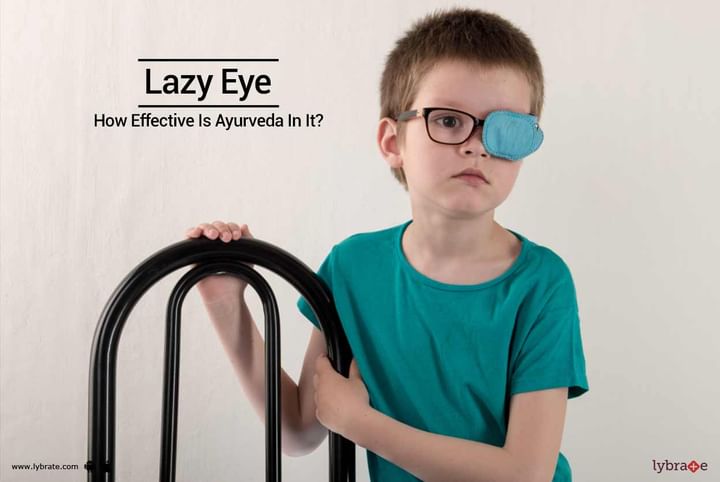Lazy Eye - How Effective Is Ayurveda In It?
Lazy eye is an eye condition that is as underrated as some of the most intriguing characters in Marvel’s movies like Namor or Daredevil. Indeed, lazy eye or amblyopia is responsible for the majority of loss of vision cases below the age of 40. It even surpasses the loss of vision due to injuries and diseases.
What Is Lazy Eye?
Amblyopia, commonly known as lazy eye, is an anomaly of the eyes where patients get reduced vision, which cannot be corrected by glasses or even contact lenses. It is not even an eye disease. In fact, it is an anomaly where the brain cannot acknowledge and interpret the image formed on the retina. The saving grace is that it mostly affects only one eye. Despite that, it may contribute to reduced vision in both eyes. Cases of lazy eye are prevalent among children; around 3% of children suffer from this disease.
Conventional Treatment
-
Neither glasses nor contact lenses nor surgery can rectify the eyes.
-
Early detection offers a better chance for a cure.
-
Lazy eye can be treated quite successfully under the age of 2. This can be done by even glasses, eye patches, etc. However, it is difficult to treat with such simple measures in older children. Hence, it calls for a neuroscientific approach.
-
Indeed, neuroscientific studies have revealed that the brain and its various perceptions can undergo a change at any age and it is known as neuroplasticity. This is where Ayurveda can play a major role.
The Role of Ayurveda In Treating Lazy Eyes
The concept of Neuroplasticity dictates that the brain has the capability to change if you make the effort and motivate the brain to learn. It is a perfect preoccupation for a lazy eye condition. You need to motivate the brain to learn that it needs to interpret the image formed in the retina of one or both of his eyes. This can be done with Ayurveda.
Ayurveda is all about the mind-body connection, and it is this connection that gets slack in anomalies like a lazy eye. The ayurvedic interpretation of the neurological system involves a root, also called Mula, a pathway through the body also called Marqa and an opening, also known as Mukha. Each of these is known as channels also known as strotas which help to orient our focus to various stimuli including visual stimuli. Ayurvedic remedies help to restore this balance in these channels with the help of Herbs and Asanas. Ayurveda also takes into account the mental constitution of individuals since different mental constitutions call for a different treatment approach.
Take Away
Despite being no immediate solution for the lazy eye, this condition can be potently cured with ayurvedic treatment. However, it is always advisable to consult an ayurvedic specialist before going for any of ayurvedic treatment.



+1.svg)
